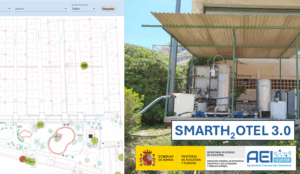As conversational AI agents gain ground in various industries, reliability and consistency are crucial to providing smooth and reliable user experiences. However, the dynamic and conversational nature of these interactions makes traditional testing and evaluation methods challenging. Conversational AI agents encompass multiple layers, from Retrieval Augmented Generation (RAG) to call-to-function mechanisms that interact with external knowledge sources and tools. Although existing benchmarks like MT-bench evaluate the model’s capabilities, they lack the ability to validate the application layers.
Common pain points in the development of conversational AI agents include:
1. Testing an agent is often tedious and repetitive, requiring a human to validate the semantic meaning of the agent’s responses.
2. Setting up suitable test cases and automating the evaluation process can be difficult due to the conversational and dynamic nature of agent interactions.
3. Debugging and tracking how conversational AI agents direct appropriate action or retrieve desired results can be complex, especially when integrated with external knowledge sources and tools.
To address these challenges, Agent Evaluation, an open-source solution that uses LLMs on Amazon Bedrock, enables comprehensive evaluation and validation of conversational AI agents at scale.
Amazon Bedrock is a fully managed service that offers a selection of high-performance models from leading AI companies through a single API, along with extensive capabilities to build generative AI applications securely, privately, and responsibly.
Agent Evaluation provides built-in support for popular services, orchestration of concurrent and multi-turn conversations with the agent during response evaluation, configurable hooks to validate actions triggered by the agent, integration into CI/CD pipelines for automated agent testing, and generated test summaries for performance insights, including conversation history, test success rate, and reasoning for results.
Using Agent Evaluation can accelerate the development and implementation of conversational AI agents at scale. For example, in the case of an agent handling insurance claims, testing may focus on the agent’s ability to search for and retrieve relevant information from existing claims. Testing begins in the development account by manually interacting with the agent and can then be automated using Agent Evaluation.
The typical workflow includes setting up a test plan, executing the plan from the command line, and viewing results. If failures occur, they are debugged using detailed trace files.
Furthermore, Agent Evaluation can be integrated into CI/CD pipelines, allowing each code change or update to undergo thorough evaluation before deployment. This helps minimize the risk of introducing errors or inconsistencies that could compromise agent performance and user experience.
Additional considerations include not using the same model for evaluation as for feeding the agent, implementing strict quality gates to prevent deployments of agents that do not meet expected thresholds, and continually expanding and refining test plans to cover new scenarios and edge cases.
Agent Evaluation represents an advanced level of confidence in the performance of conversational AI agents, optimizing development workflows, accelerating time to market, and providing exceptional user experiences.
via: MiMub in Spanish









